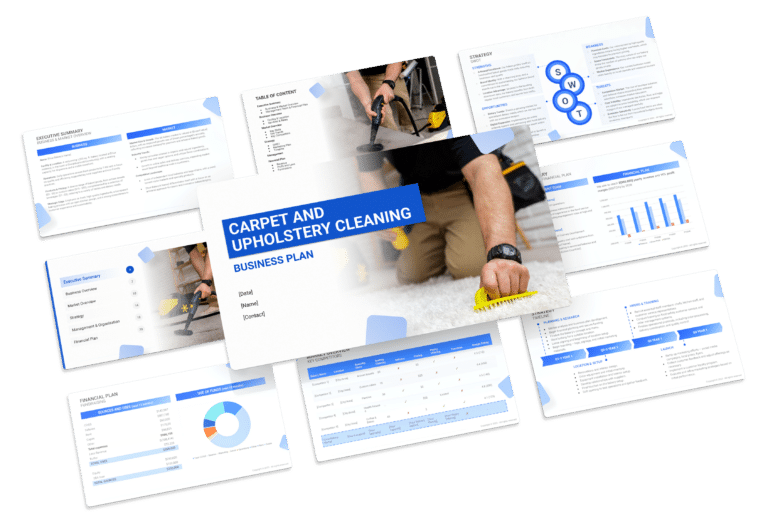How to Prepare a SWOT for a Laundromat

Integral to formulating a robust business plan for a laundromat is the strategic implementation of a SWOT analysis. Examining internal strengths and weaknesses, alongside external opportunities and threats, this framework equips laundry business proprietors with essential insights for effective planning.
Identifying strengths, like state-of-the-art equipment, a dedicated customer base, and a prime location, and acknowledging weaknesses such as outdated machinery or limited service options, empowers laundromat entrepreneurs to navigate the competitive landscape adeptly.
This article will delve into a variety of examples illustrating strengths and weaknesses, guiding laundromat owners in optimizing their business plans.

Strengths
Laundromat services boast inherent strengths that position them as indispensable players in the laundry industry.
- Convenience and Accessibility: Laundromats provide convenient and accessible laundry solutions, catering to individuals and families without in-house facilities.
- Example: Implementing extended operating hours and strategically locating laundromats near residential areas enhances accessibility and customer convenience.
- Variety of Washing Machines and Dryers: Offering a range of washing machines and dryers caters to diverse customer needs, from small loads to bulk items.
- Example: Marketing the availability of various machine sizes and promoting package deals for bulk loads attracts a broader clientele.
- Self-Service and Cost Efficiency: Laundromats leverage self-service models, allowing customers to control their laundry process and ensuring cost efficiency.
- Example: Promoting self-service options and offering loyalty programs or discounted rates during off-peak hours incentivizes cost-conscious customers.
- Community Engagement and Atmosphere: Laundromats often foster a sense of community, providing a unique atmosphere for customers to socialize or work while their laundry is in progress.
- Example: Hosting community events, such as laundry-themed gatherings or collaborations with local businesses, enhances community engagement and loyalty.
Weaknesses
Identifying weaknesses is crucial for laundromat owners to enhance service quality and address potential challenges.
- Dependency on Equipment Functionality: Laundromats heavily rely on the functionality of washing machines and dryers, and equipment malfunctions can lead to service disruptions.
- Example: Implementing regular maintenance schedules, investing in high-quality machines, and having on-site staff for immediate assistance minimize the impact of equipment malfunctions.
- Seasonal Fluctuations in Demand: Seasonal variations in demand may lead to inconsistent revenue streams for laundromats.
- Example: Offering seasonal promotions, such as discounted rates during peak vacation times or back-to-school seasons, helps maintain customer flow throughout the year.
- Vulnerability to Vandalism and Theft: Laundromats may be susceptible to vandalism or theft, especially during off-peak hours or in less secure locations.
- Example: Installing security cameras, implementing well-lit premises, and collaborating with local law enforcement contribute to a safer environment for customers.
- Limited Service Differentiation: Some laundromats may struggle with service differentiation, making it challenging to stand out in a crowded market.
- Example: Introducing innovative services such as eco-friendly detergents, garment repair stations, or laundry pickup and delivery services distinguishes the laundromat in the market.
Opportunities
Identifying and capitalizing on opportunities is essential for laundromat owners aiming for growth and adaptability in a competitive market.
- Eco-Friendly Practices and Marketing: Embracing eco-friendly practices, such as using energy-efficient machines and promoting green detergents, appeals to environmentally conscious customers.
- Example: Showcasing eco-friendly initiatives on marketing materials and collaborating with local environmental organizations enhances the laundromat’s appeal.
- Digital Marketing and Loyalty Programs: Leveraging digital marketing strategies, such as a user-friendly mobile app and loyalty programs, enhances customer engagement.
- Example: Implementing a mobile app for service notifications, promotions, and loyalty rewards encourages customer retention and builds a digital community.
- Collaboration with Local Businesses: Forming partnerships with local businesses, such as cafes or bookstores, creates opportunities for cross-promotions and shared customer bases.
- Example: Collaborating with a nearby café for joint promotions, such as discounts for customers who visit both businesses, expands the laundromat’s reach.
- Diversification of Services: Introducing additional services like garment repair, shoe cleaning, or laundry pickup and delivery caters to evolving customer needs.
- Example: Marketing a range of supplementary services and offering package deals for combined services enhances the laundromat’s service portfolio.
Threats
Anticipating and mitigating threats is crucial for laundromat owners to ensure resilience and sustainability in a dynamic market.
- Competition from In-House Laundry Facilities: The rise of in-house laundry facilities in residential complexes may pose competition to traditional laundromats.
- Example: Highlighting the speed, convenience, and variety of services offered by laundromats in marketing materials differentiates them from in-house alternatives.
- Economic Downturns and Reduced Consumer Spending: Economic downturns can lead to reduced consumer spending on non-essential services like laundry.
- Example: Implementing cost-effective promotions, such as loyalty programs or bundled services, during economic downturns can help maintain customer loyalty.
- Rising Operating Costs: Fluctuations in utility costs, rent, and equipment maintenance expenses can impact laundromats’ profitability.
- Example: Regularly reviewing and optimizing operational processes, negotiating utility contracts, and exploring energy-efficient equipment options help manage rising operating costs.
- Regulatory Changes and Compliance Challenges: Evolving regulations related to waste disposal or environmental standards may pose challenges to laundromat operations.
- Example: Proactively staying informed about changing regulations, implementing sustainable practices, and collaborating with industry associations ensure compliance and environmental responsibility.





